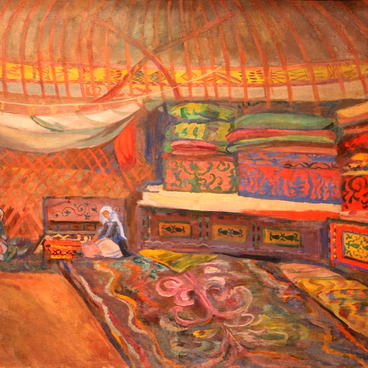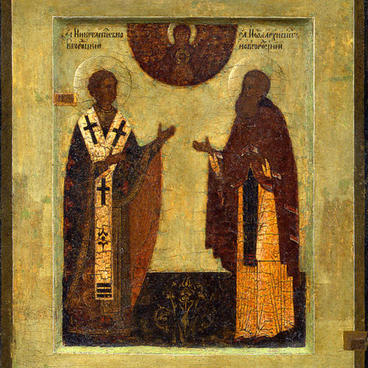Mother of God Hodegetria of Shuya and Smolensk
Creation period
Early 19th century
Dimensions
111,5x91 cm
111,5x91x4 cm
111,5x91x4 cm
Technique
Wood, tempera, carving
Exhibition
0
Open in app#1

Unknown author
Mother of God Hodegetria of Shuya and Smolensk
#3
#2
The icon of Mother of God Hodegetria of Shuya and Smolensk was painted at the beginning of the 19th century by artists from the Ivanovo region, probably from the town of Palekh or Kineshma. Since the beginning of the 1st millennium, the icons of Hodegetria, which means ‘Showing the way’ depicted the Mother of God and the baby Jesus on her left arm. The Mother’s head is turned to her Son and slightly bowed.
The variant of Hodegetria of Shuya and Smolensk first appeared in the 17th century in the town of Shuya, Vladimir province. Researchers suggest that it was a copy of a more ancient icon. Hodegetria of Shuya and Smolensk is different from other icons in that Jesus sits with his right leg held high, holding his heel. His left foot touches the Virgin’s right hand. The Mother of God in the icon wears an omophorion, a large rectangular scarf usually worn by married women. Here it is draped in a more complicated fashion than in other icons.
The variant of Hodegetria of Shuya and Smolensk first appeared in the 17th century in the town of Shuya, Vladimir province. Researchers suggest that it was a copy of a more ancient icon. Hodegetria of Shuya and Smolensk is different from other icons in that Jesus sits with his right leg held high, holding his heel. His left foot touches the Virgin’s right hand. The Mother of God in the icon wears an omophorion, a large rectangular scarf usually worn by married women. Here it is draped in a more complicated fashion than in other icons.
#4
Technique
#5
The icon was painted on a wooden base. Woodcarvers cut a recess, called ‘the ark’ in iconography, for the central image. This recess is usually rectangular, but this icon has an ornately shaped upper part.
The board was covered with linen fabric called pavoloka, and with several layers of levkas, a special mixture of chalk, glue and oil. After that, the carvers worked on the icon, creating ornaments on the frame and on the ark itself. Then the icon painters started their work.
The background was painted with yellow ocher, a paint made of rust and clay.
#7
The frame of the icon is covered with blue paint based on lapis lazuli and decorated with gold leaf patterns, and some precious gold hatching is seen on Jesus’ clothes.
#6
In the 20th century, the icon was kept in Viktor Samsonov’s private collection in Saint-Petersburg. In 1996, 400 exhibits from his home museum, including the icon of the Mother of God of Shuya and Smolensk, were acquired by the Generations Foundation of the Khanty-Mansiysk Autonomous Area. In 2011, they were transferred to the State Art Museum of Khanty-Mansiysk.
#8
State Museum of Fine Arts of Khanty-Mansiysk
read morehide
00:00
00:00
1x
Mother of God Hodegetria of Shuya and Smolensk
Creation period
Early 19th century
Dimensions
111,5x91 cm
111,5x91x4 cm
111,5x91x4 cm
Technique
Wood, tempera, carving
Exhibition
0
Open in app
Share

